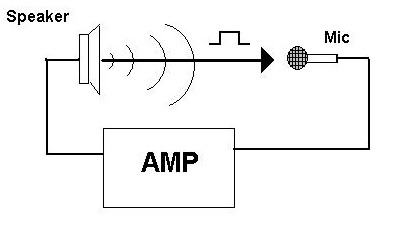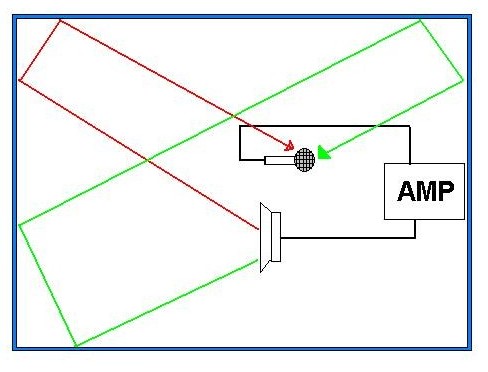What Is Feedback?
In a simple P.A. (public address) System there are three components. There is a Microphone, an Amplifier and a Speaker. The microphone picks up a sound signal and converts it into a voltage. The amplifier boosts the power of the signal. Then the speaker turns the amplified signal back into sound. Feedback is the high or low pitch tone/squeal that is sometimes emitted from a PA system. Chances are good that if you have ever heard a live band or a lecture you have heard feedback.
Here is a recording of Feedback .
The way that feedback occurs is both a simple and complex problem. The simple version of feedback is as follows. A microphone takes in a signal; the signal is amplified leaves the speaker and goes back into the mic. The process is repeated over and over and the power of the tone explodes. This is what creates the loud obnoxious feedback noise.

There are however other factors that complicate this system and its output. The acoustics of a room, the frequency response of the room, the frequency response of the microphone and its position relative to the speaker, the gain and equalization levels of the amplifier are all factors that contribute to the production of feedback. However, the two most prominent causes of feedback are position of the mic with respect to the acoustics of the room and the gain of the output signal. Often times, if there is enough power in a signal, it is possible for it to bounce around the room and make its way back into the microphone causing the system to feedback.

This occurrence is what causes the high pitch squeal that is known as feedback. The way to stop it is to lower the gain of the signal at the frequency of the feedback. However this is easier said than done. In order to eliminate feedback from an audio signal one must first understand the nature of feedback as a signal. And, the only way to analyze feedback is if you have a feedback signal to look at.
Home Back to Feedback